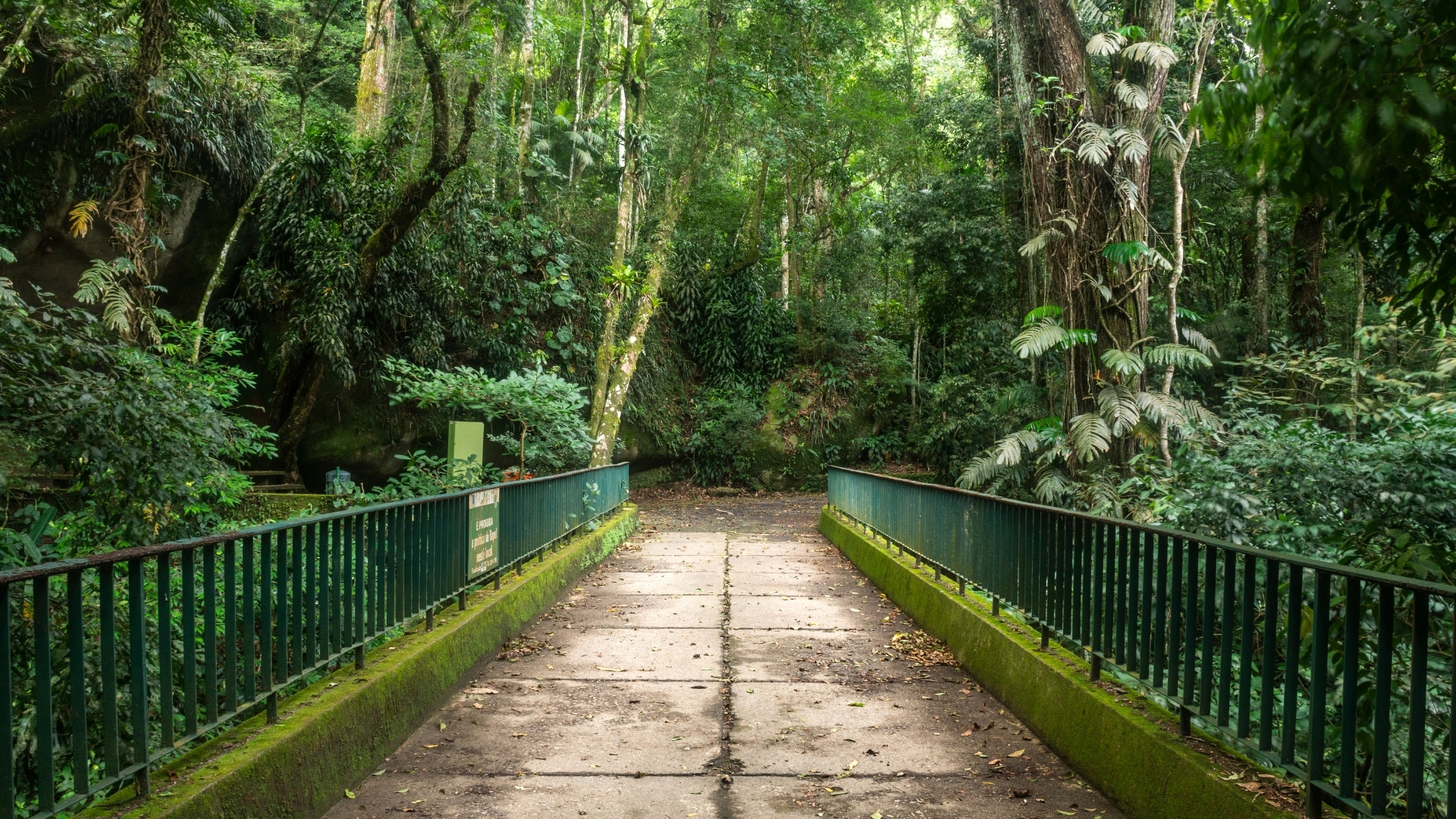
Tucked within the bustling city of Rio de Janeiro lies Tijuca National Park, a verdant paradise offering an unforgettable escape into the world’s largest urban rainforest.
Highlights:
- Trek through lush jungle trails to discover hidden waterfalls, mysterious caves, and diverse wildlife just minutes from Rio’s beaches
- Cool off under crystal-clear cascades like the majestic 35-meter Taunay Waterfall and the refreshing Baronesa Waterfall
- Marvel at breathtaking panoramic views of Rio de Janeiro from Vista Chinesa and other stunning viewpoints throughout the forest
Tickets & Prices
You won’t need to fuss with separate entrance tickets for Tijuca National Park—access is bundled into guided tours ranging from half-day adventures to full-day expeditions. Tours typically swing by your hotel in Copacabana, Ipanema, or Leblon, making the logistics surprisingly painless.
Though the park itself is free with a guide, I’d recommend locking in your tour well before arrival, as slots fill up quickly during high season when everyone’s looking to escape Rio’s heat for a forest adventure.
Tours
Fancy exploring Rio’s green lungs with someone who knows all the secret spots? You’ve got options!
The forest’s most popular hiking expeditions run about 5 hours and come in both intimate small-group formats and private experiences if you prefer to set your own pace.
Your guide (typically speaking English, Spanish, and Portuguese) will lead you along gentle trails to the forest’s standout features—think misty waterfalls, mysterious caves, and viewpoints that’ll have you reaching for your camera every few minutes.
Don’t stress about fitness levels; I managed the trails in regular sneakers, and I’m certainly no marathon runner.
Opening Hours
The forest welcomes visitors daily, with tour operators running excursions in both the morning dew and afternoon warmth.
I’d strongly suggest hitting the trails before noon—not only will you have better chances of spotting wildlife when they’re most active, but you’ll also dodge the afternoon crowds that can sometimes clog the more popular stops.
Just a heads-up: if you’re planning to visit Vista Chinesa (one of those jaw-dropping viewpoints), avoid weekends and holidays—park authorities close it off then, something I learned the hard way on my first visit!
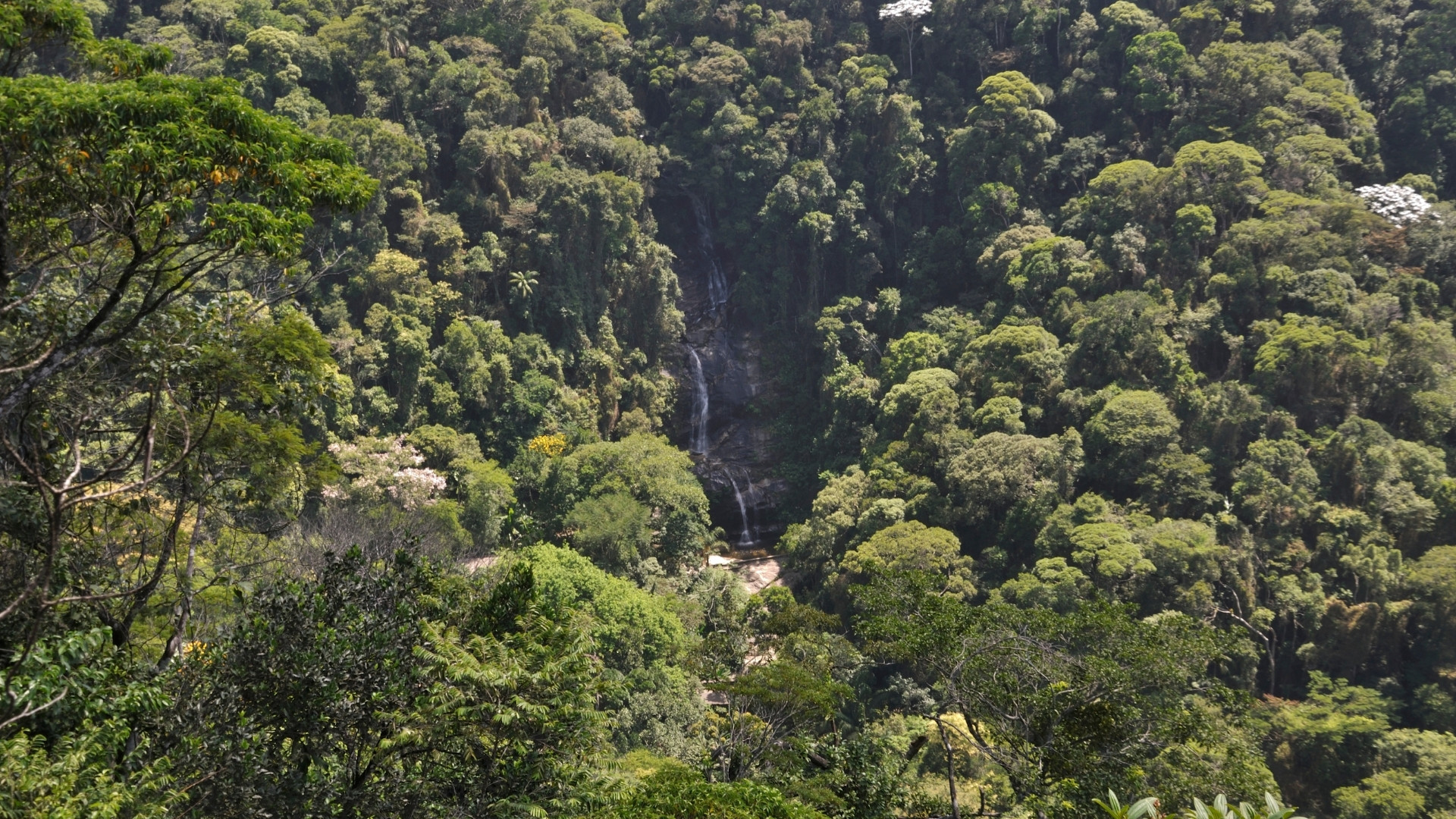
What to See and Do
Here are the incredible things to do at Tijuca Forest that make it one of Rio’s must-visit natural attractions.
Splash Under the Impressive Taunay Waterfall
Your Tijuca adventure typically begins with one of the forest’s most spectacular sights – the Cascatinha Taunay. Standing at an impressive 35 meters high, this waterfall creates an awe-inspiring introduction to the park.
When I first laid eyes on it, I was struck by how something so pristine and natural could exist so close to the hustle of Rio.
The cascade thunders down into a small pool, creating a refreshing mist that offers welcome relief from the tropical heat. Most tours allow about 20 minutes here, giving you plenty of time to snap photos and appreciate the natural amphitheater created by the surrounding forest.
The waterfall’s name honors Nicolas-Antoine Taunay, a French painter who fell in love with Brazil’s landscapes in the 19th century, and it’s easy to see why this spot captivated him.
Explore Three Mysterious Caves Along the Caves Trail
One of Tijuca’s most adventurous experiences is wandering through its network of natural caves. The Caves Trail winds past three fascinating rock formations: Belmiro Cave with its hidden chambers, Archer Cave where light filters through natural skylights, and the atmospheric Bat Cave where the temperature drops noticeably as you step inside.
Don’t worry – these aren’t deep, treacherous caverns requiring special equipment. The caves are relatively shallow and completely safe to explore with your guide.
The Bat Cave (Gruta dos Morcegos) is particularly interesting, with its dramatic entrance and cool, slightly damp interior offering a glimpse into the forest’s geological history. Listen closely and you might hear the soft fluttering of its namesake residents hiding in the shadows above!
Your guide will likely provide headlamps if needed, illuminating these natural wonders and creating an exciting mini-adventure within your forest exploration. The surrounding granite walls create a dramatic backdrop that photographers will love.
Cool Off at Crystalline Waterfalls
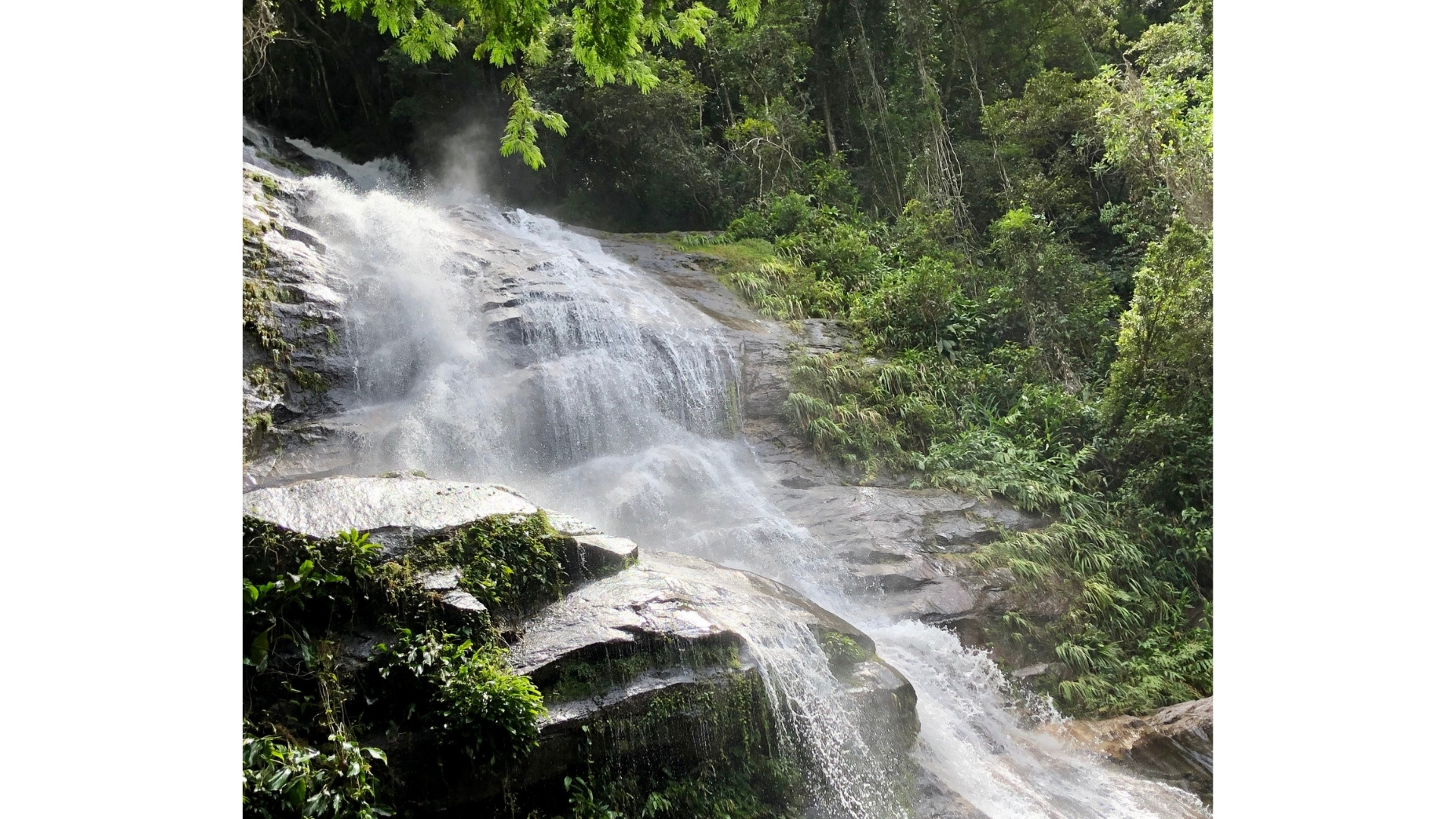
Perhaps the most refreshing part of any Tijuca Forest visit is the opportunity to experience its smaller, swimmer-friendly waterfalls. While not deep pools for swimming, waterfalls like Cachoeira Diamantina and Cascata da Baronesa offer what locals consider an essential Brazilian experience – a natural waterfall shower.
As your guide will tell you, these cascading waters ranging from 2-5 meters high are believed to “cleanse the soul” – and I can attest they certainly cleanse away the hiking sweat! The water is crystal clear, coming directly from the pristine water basins within the park. The water flow varies by season, but even in drier periods, the falls maintain their charm.
Bring a quick-dry towel and swimwear, as most tours allocate 15-20 minutes at these stops – perfect for a refreshing break midway through your exploration.
Spot Diverse Wildlife in Their Natural Habitat
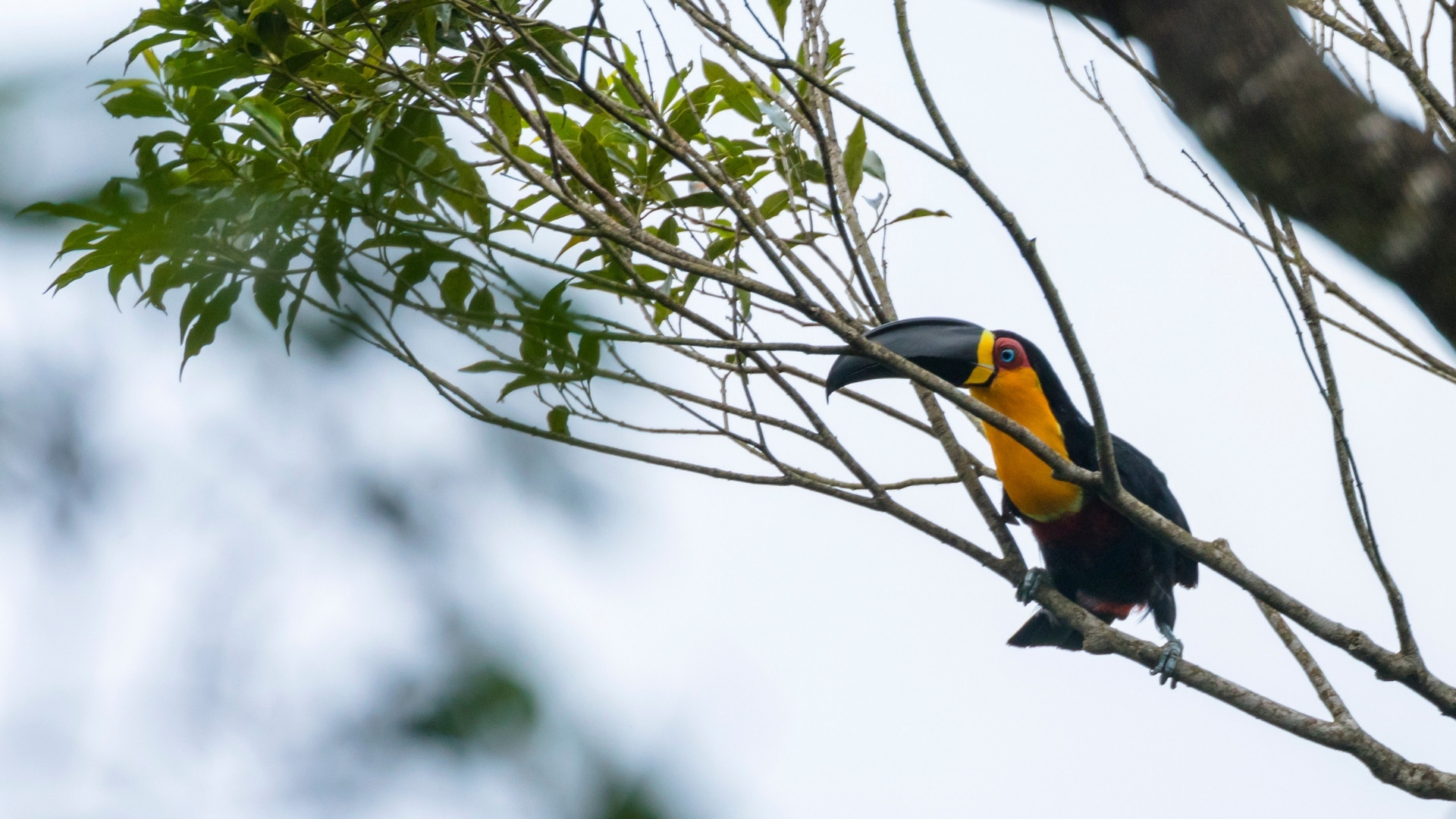
One of Tijuca’s most exciting aspects is the chance to encounter rainforest wildlife in their natural environment. Keep your eyes peeled (and camera ready) for colorful toucans perched in the canopy, playful monkeys swinging through trees, curious coatis crossing your path, and if you’re particularly lucky, even a sloth slowly making its way along a branch.
While wildlife sightings aren’t guaranteed since the animals roam freely throughout the forest, morning tours on weekdays typically offer the best chances for wildlife encounters. Your guide will help spot camouflaged creatures that might otherwise go unnoticed.
I’ll never forget watching a family of monkeys follow our small group for several minutes, curious about the human visitors in their domain. The biodiversity here is remarkable for a forest surrounded by a metropolis.
Soak in Panoramic Views of Rio from Vista Chinesa
The natural beauty of Tijuca Forest is spectacular, but the views it offers of Rio de Janeiro might be even more impressive. Vista Chinesa (Chinese View) provides one of the most breathtaking panoramas anywhere in the city.
This oriental-style gazebo sits at an elevation that frames Sugarloaf Mountain, the vast Guanabara Bay, and Rio’s famous beaches in one spectacular vista.
It’s worth noting that this viewpoint is closed on weekends and holidays due to park regulations, so plan accordingly if this is a must-see for you.
The viewpoint gets its name from its oriental architectural style, built to honor Chinese immigrants who introduced tea cultivation to the region in the early 19th century. It’s a perfect spot for those iconic Rio photos that capture both the natural and urban beauty of this unique city.
Visit the Historic Mayrink Chapel
The small but striking Capela Mayrink adds a cultural element to your natural adventure.
This bright pink chapel tucked within the forest dates back to the 19th century and offers a fascinating glimpse into Brazil’s religious history.
Most tours include a brief 10-minute stop here, allowing you to appreciate both the chapel’s charming exterior and its small but impressive collection of artworks inside. The vibrant color makes for a stunning contrast against the surrounding green canopy.
Experience Rio’s Hang Gliding Takeoff Point at Pedra Bonita
If your tour includes a visit to Pedra Bonita, you’ll get to witness one of Rio’s most exhilarating activities – hang gliding. This massive rock formation serves as the launch point for brave souls taking to the skies over São Conrado Beach.
Even if you’re not participating in the flight yourself, watching the colorful wings take off against the backdrop of forest and ocean creates an unforgettable spectacle.
The views from this vantage point are spectacular in their own right, making it a worthwhile stop regardless of whether hang gliders are launching during your visit.
Learn About Conservation at the Visitor Center
A quick stop at the Tijuca National Park Visitor Center unveils the remarkable story behind this forest’s existence.
Far from being an untouched wilderness, Tijuca is actually one of history’s greatest environmental restoration successes—the entire forest was nearly wiped out for coffee plantations in the 1800s before being painstakingly replanted to save Rio’s dwindling water supply.
Inside, interactive displays chronicle this environmental comeback story while showcasing the incredible biodiversity that now thrives here.
On my visit, a knowledgeable ranger pointed out how certain native tree species were specifically selected to restore the watershed, while showing us samples of the rich soil that now supports the ecosystem.
Though it’s just a 15-minute stop on most tours, the context it provides transforms how you’ll experience everything else in the park.
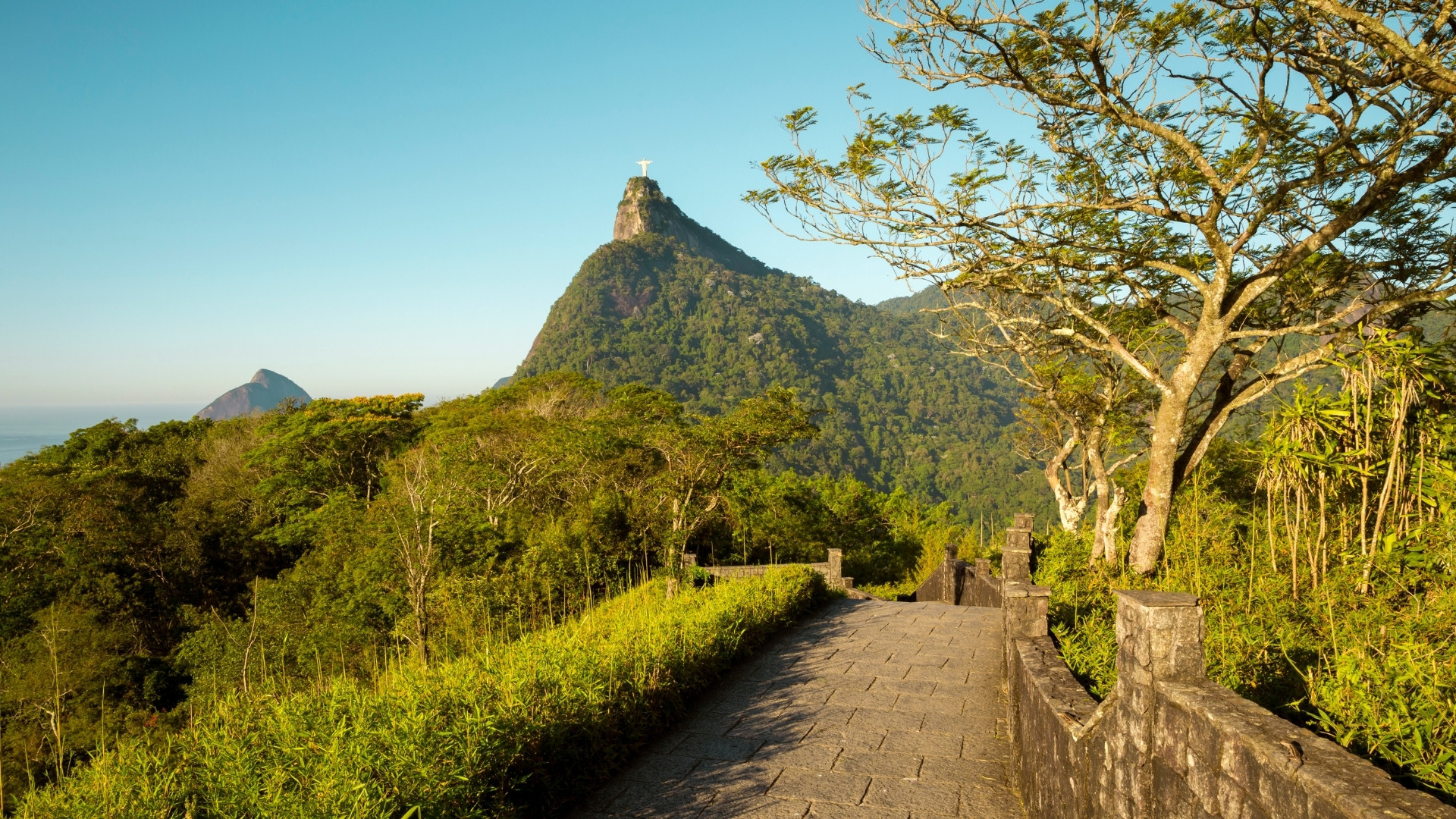
Directions
Getting to Tijuca’s lush paradise is surprisingly easy for being such an escape from city life. Most visitors (myself included) opt for the convenience of guided tours that’ll scoop you up right from your hotel lobby in Rio’s beach zones.
The drive winds through the city for about 30-40 minutes before entering the forest—just long enough to get some background from your guide but not so long that you’ll get antsy.
If you’re the independent type, grab a taxi or rideshare to the main entrance, or brave the local bus system to the Tijuca neighborhood where you can find transportation to specific trailheads.
Just remember that Rio’s traffic can be unpredictable, so build in some buffer time if you’re meeting a tour.
Nearby Places
Christ the Redeemer: This iconic 30-meter statue of Jesus Christ stands atop Corcovado Mountain within Tijuca National Park and offers spectacular panoramic views of Rio de Janeiro. Visitors can reach this New Wonder of the World via the historic Corcovado Train that travels through the forest.
Sugarloaf Mountain: Located near the entrance to Guanabara Bay, this distinctive peak provides stunning 360-degree views of Rio de Janeiro’s coastline, beaches, and urban landscape. The cable car ride to the summit offers another perspective of the city’s natural beauty.
Selarón Steps: These vibrant, mosaic-covered steps in Rio’s Lapa neighborhood represent the life’s work of Chilean artist Jorge Selarón. The 250 steps have become a colorful icon of the city and a popular photo spot for visitors.
Maracanã Stadium: One of the world’s most famous football stadiums, Maracanã has hosted World Cup finals and remains a temple to Brazil’s passionate football culture. Tours allow visitors to explore this historic sporting venue.
Sambadrome: This purpose-built parade area hosts Rio’s legendary Carnival celebrations each year. Visit to learn about the tradition of samba and imagine the spectacle of the world’s biggest Carnival parade.
Did you know that: (5 Interesting Facts!)
- Tijuca Forest is the world’s largest urban forest, covering approximately 32 square kilometers within the city limits of Rio de Janeiro.
- The forest is actually the result of a massive reforestation project begun in the 1860s after the original Atlantic Forest was cleared for coffee plantations, making it one of the earliest large-scale environmental restoration projects in history.
- During periods of heavy rain, the park’s waterfalls dramatically increase in flow, transforming peaceful cascades into powerful torrents that showcase nature’s impressive force.
- Some of the trails and caves in Tijuca Forest were once used as hideouts for escaped slaves seeking refuge in the 19th century.
- The park is home to over 1,600 plant species and more than 350 different animal species, including threatened and endangered wildlife that have found sanctuary in this urban jungle.
History:
- 1861: Emperor Dom Pedro II orders the reforestation of Tijuca Forest after deforestation for coffee plantations threatened Rio’s water supply.
- 1861-1874: Major Manuel Gomes Archer leads the replanting of over 100,000 trees, beginning the restoration of the forest.
- 1880s: Additional land is acquired to expand the protected forest area around Rio’s water sources.
- 1908: The area begins its transformation into a public park with the construction of roads, trails, and viewpoints.
- 1961: Tijuca Forest is officially declared a national park by the Brazilian government.
- 1991: UNESCO designates Tijuca National Park as part of the Cultural Landscape of Rio de Janeiro World Heritage Site.
- 2011: The park undergoes significant restoration and infrastructure improvements ahead of the 2016 Olympic Games in Rio.
- 2016: Tijuca Forest gains international attention as the backdrop for several Olympic events and ceremonies.
- 2022: The park implements new conservation strategies to protect biodiversity and combat the effects of climate change.
FAQ
How difficult are the hiking trails in Tijuca Forest?
Most trails in Tijuca Forest are relatively easy with some moist terrain but no significant challenges. The trails are suitable for visitors of all fitness levels, though comfortable walking shoes are recommended for the best experience.
Can I swim in the waterfalls?
The waterfalls in Tijuca Forest form cascades rather than deep pools. While swimming isn’t possible, visitors can enjoy refreshing waterfall showers—a local tradition said to “cleanse the soul.”
Is wildlife viewing guaranteed?
Wildlife sightings cannot be guaranteed as animals roam freely throughout the forest. Morning tours on weekdays offer the best chance to spot creatures like monkeys, toucans, and coatis in their natural habitat.
Do I need a guide to visit Tijuca Forest?
While independent visits are possible, a guide is highly recommended to navigate the trails safely, learn about the ecosystem, and discover hidden spots that might otherwise be missed.
What should I bring for a Tijuca Forest tour?
Essentials include comfortable walking shoes, swimwear, a towel, water, insect repellent, sunscreen, and a camera. A small daypack is useful for carrying these items during your exploration.